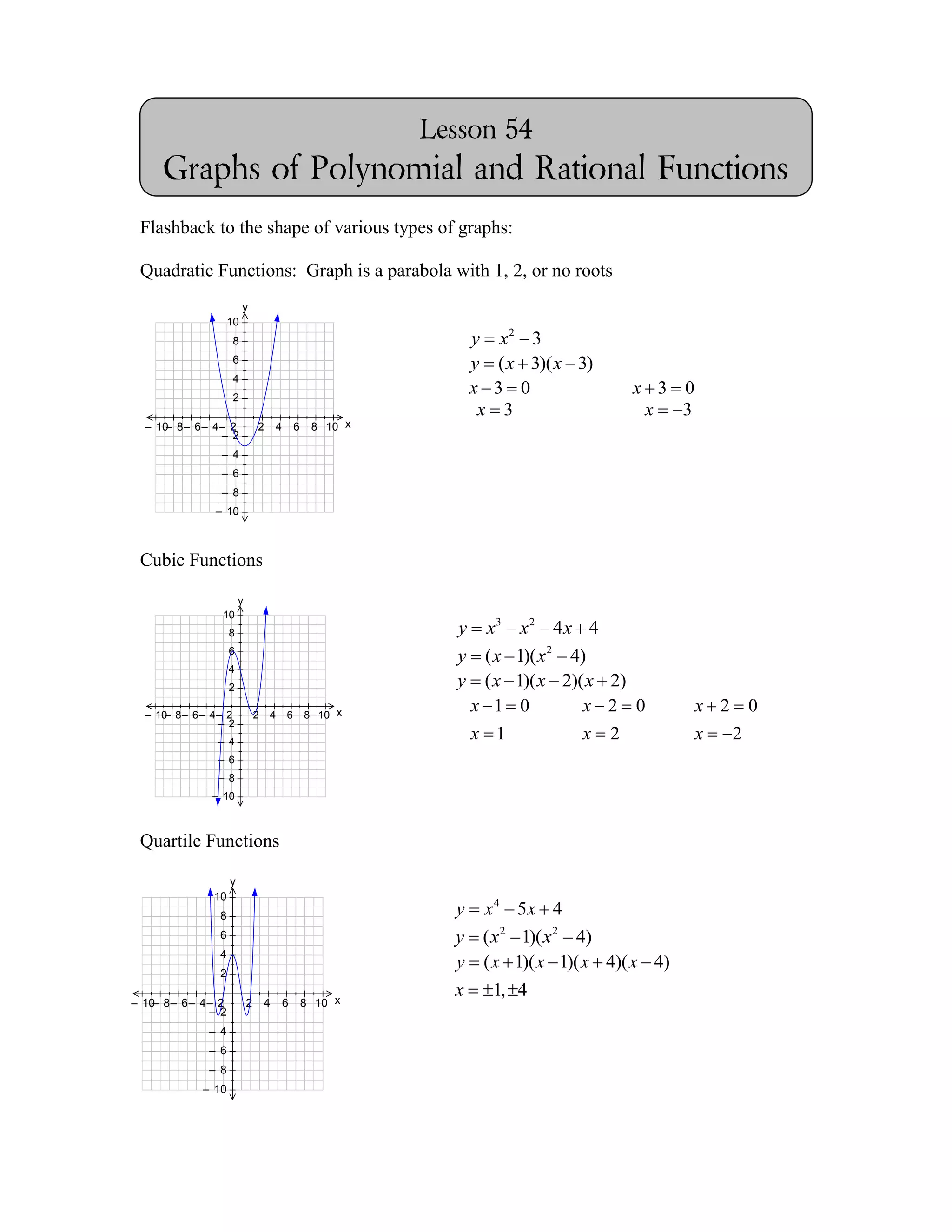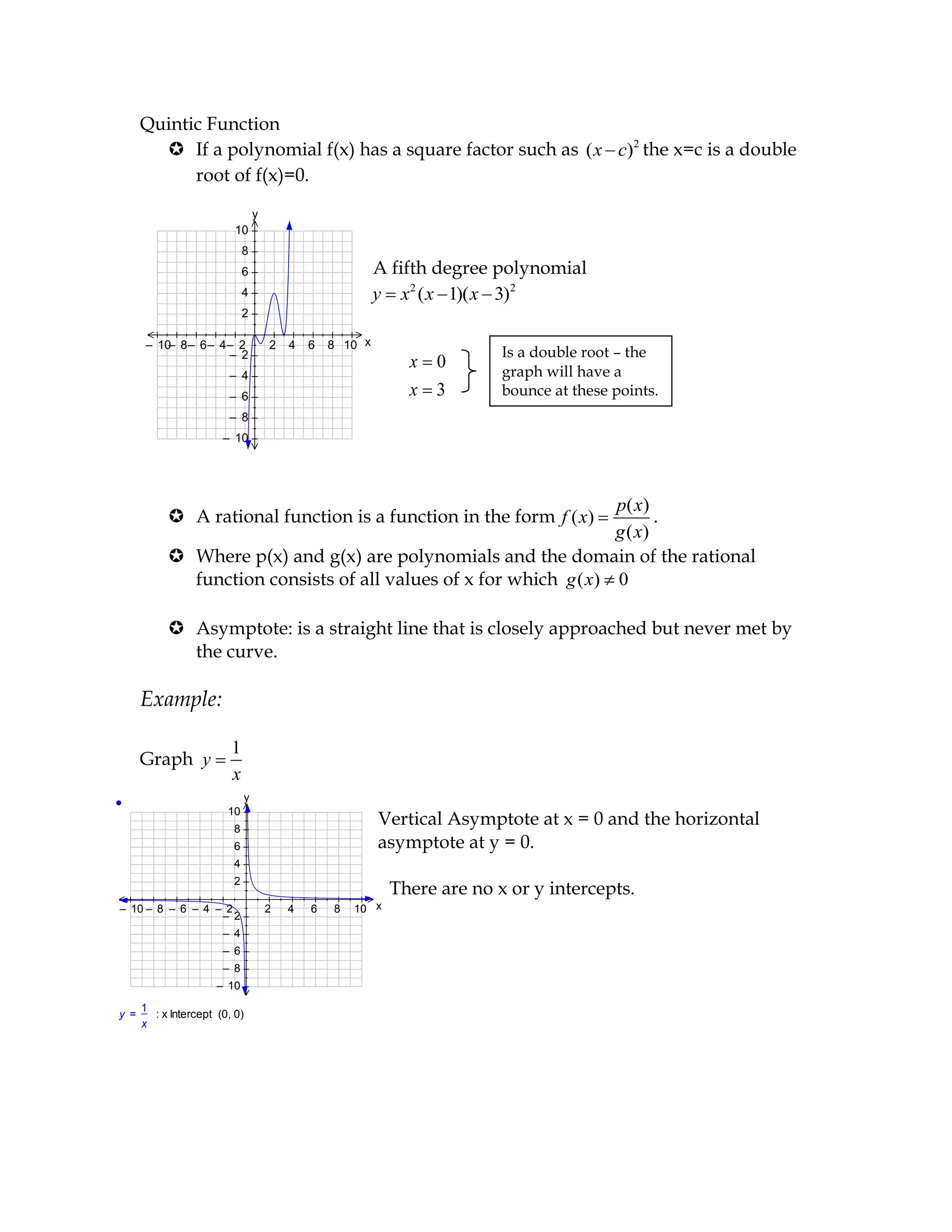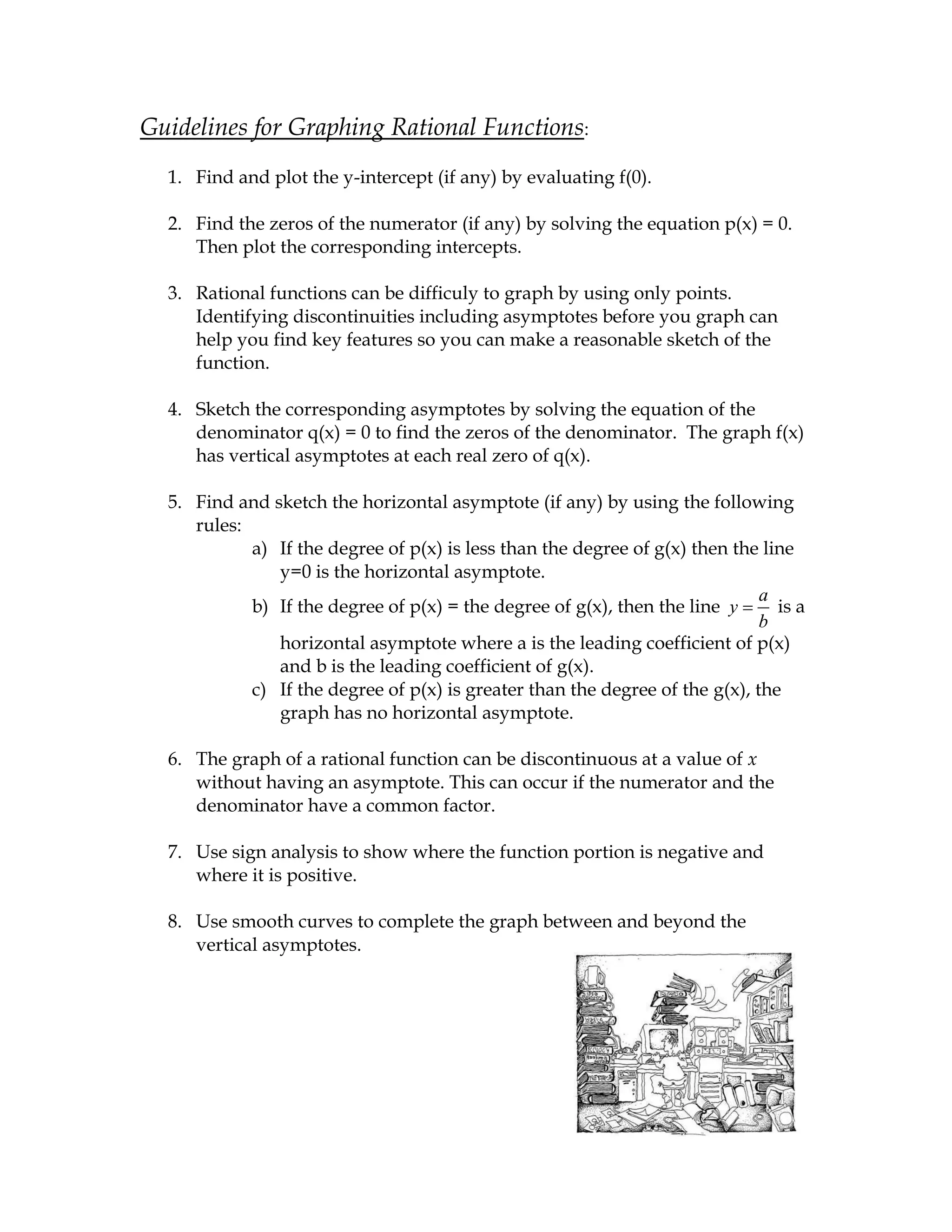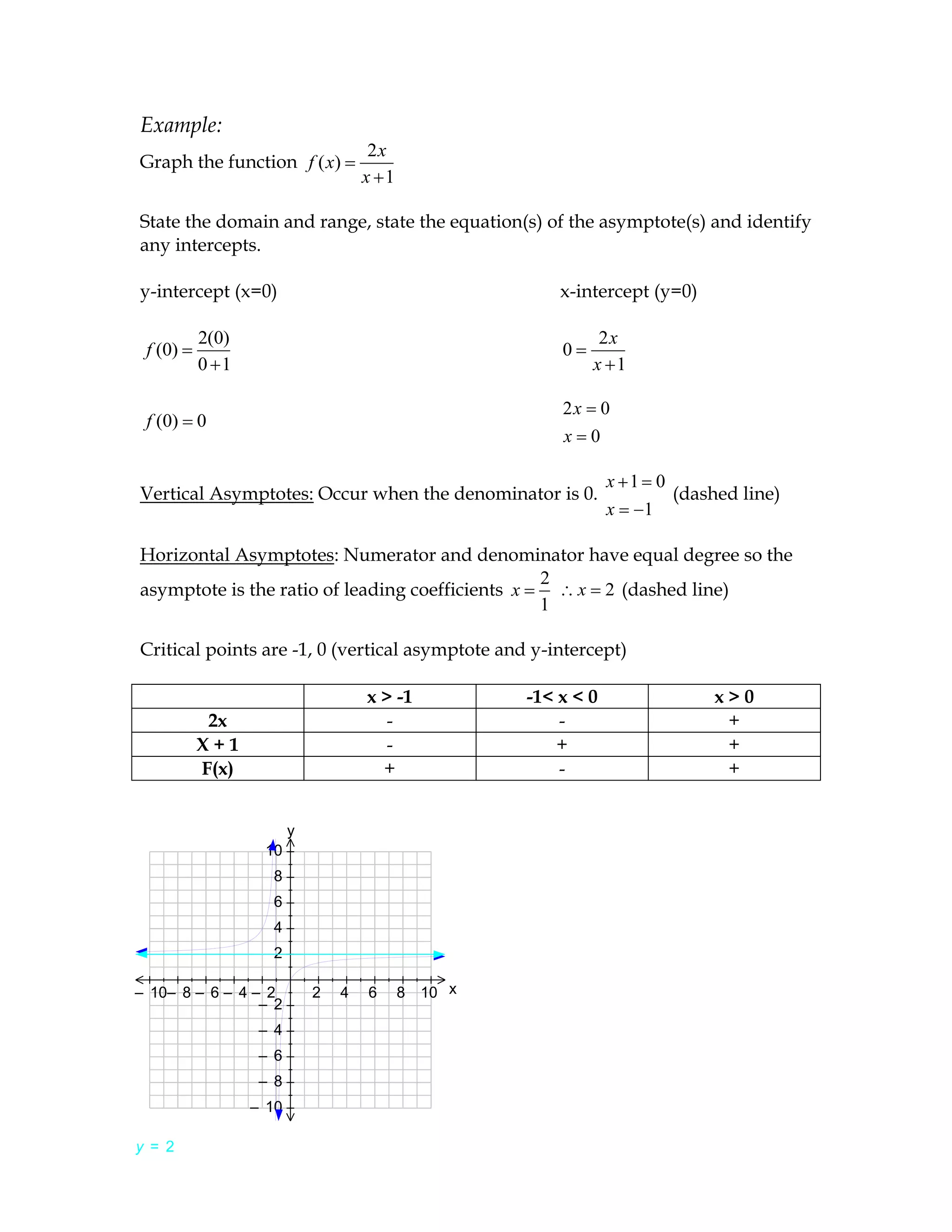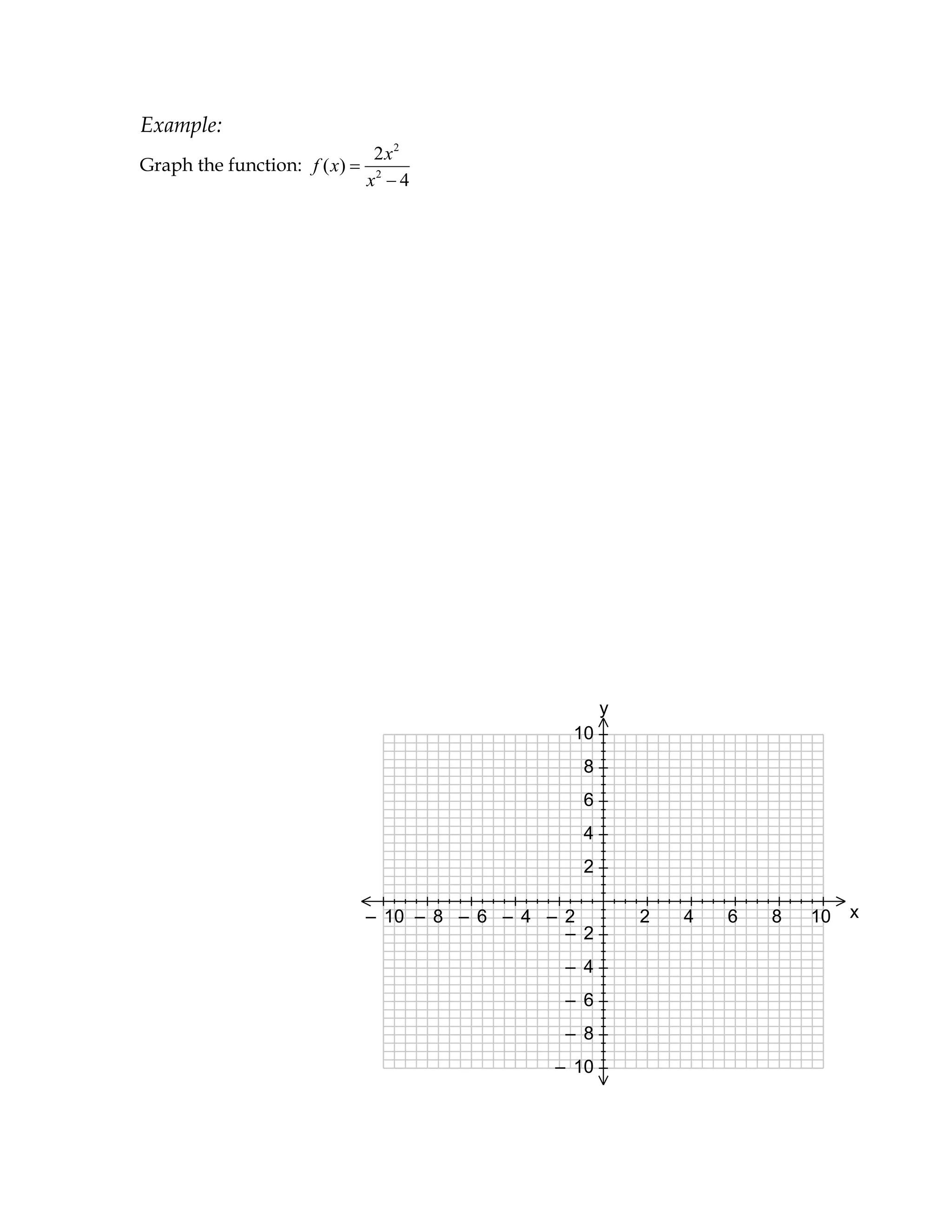The document provides guidelines for graphing polynomial and rational functions. It discusses the key features of graphs of quadratic, cubic, quartic and quintic polynomials. It then discusses how to graph rational functions by identifying intercepts, asymptotes, discontinuities and using sign analysis to determine the positive and negative portions of the graph. An example rational function is graphed as an illustration.
